In a world where bigger often seems better, a tiny yet utterly charming trend has been quietly making its presence known: the mini cow. These pint-sized bovines, often standing no taller than a large dog, are capturing the hearts of farmers, enthusiasts, and curious onlookers alike.
Beyond their adorably petite stature, these mini cows boast a fascinating blend of practicality, sustainability, and undeniable appeal. As we go into the charming world of miniature cows, we’ll reveal the unique characteristics that set them apart from their full-sized counterparts.
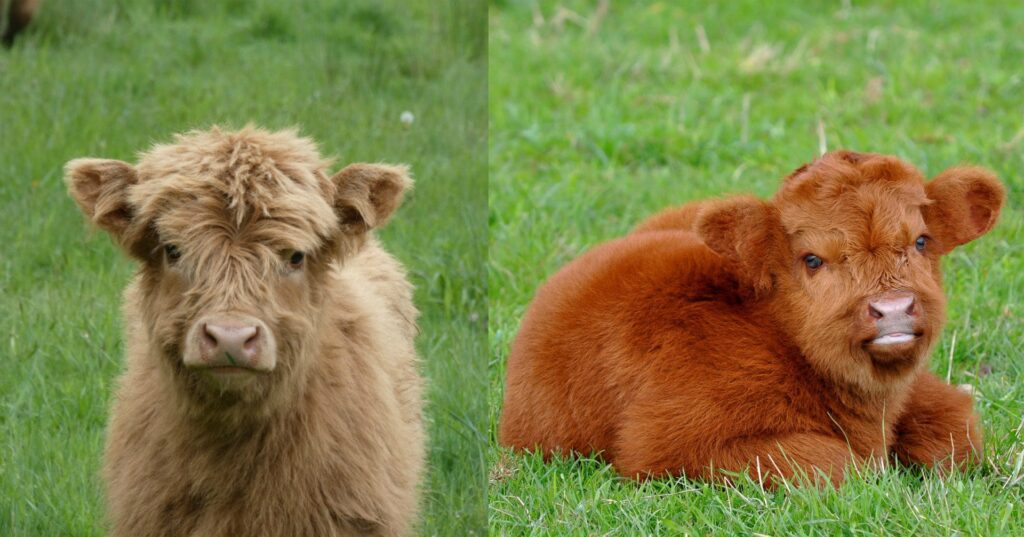
From their manageable size to the surprising range of breeds, these miniature marvels offer a fresh perspective on traditional cattle farming.
Read Also: The Dogon Tribe Of Africa: Sirius Star, Myth, Unknown Facts
What is a Mini Cow?
A mini cow, often referred to as a miniature cow or mini cattle, is a selectively bred bovine with smaller dimensions compared to standard-sized cattle breeds. These diminutive bovines are typically bred for various reasons, including practicality, space considerations, and as pets or companions.
While mini cows come in a variety of breeds, they share common traits such as reduced height and weight in comparison to traditional cattle. The breeding of mini cows involves careful selection for smaller stature while maintaining desirable traits such as temperament, milk production, and meat quality.
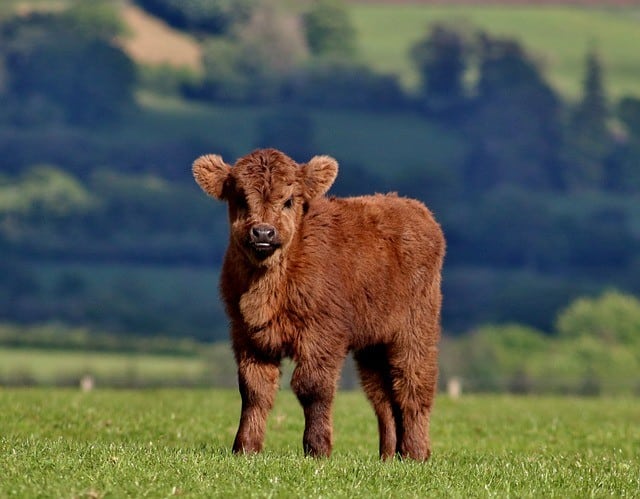
Due to their smaller size, mini cows are often more manageable and require less space and resources than their full-sized counterparts, making them suitable for small farms or even suburban settings. In addition to their practical applications in agriculture, mini cows have gained popularity as pets and novelty animals.
Their charming appearance and gentle nature make them appealing to individuals seeking non-traditional companionship. As the trend of mini cows continues to grow, enthusiasts and farmers alike are exploring the unique qualities and possibilities that these pint-sized bovines bring to the world of livestock.
How big is the Teacup Mini Cow?
It’s important to note that the term “teacup” is not a recognized classification in the context of miniature cows. The size of miniature cows can vary depending on the specific breed and breeding practices, but there isn’t a standardized category called “teacup” for these animals.
Miniature cows are generally much smaller than traditional cattle breeds, with heights typically ranging from around 36 inches to 48 inches at the shoulder. Their weight can vary, but they are significantly smaller than standard-sized cows, often weighing between 500 to 1,000 pounds or even less.
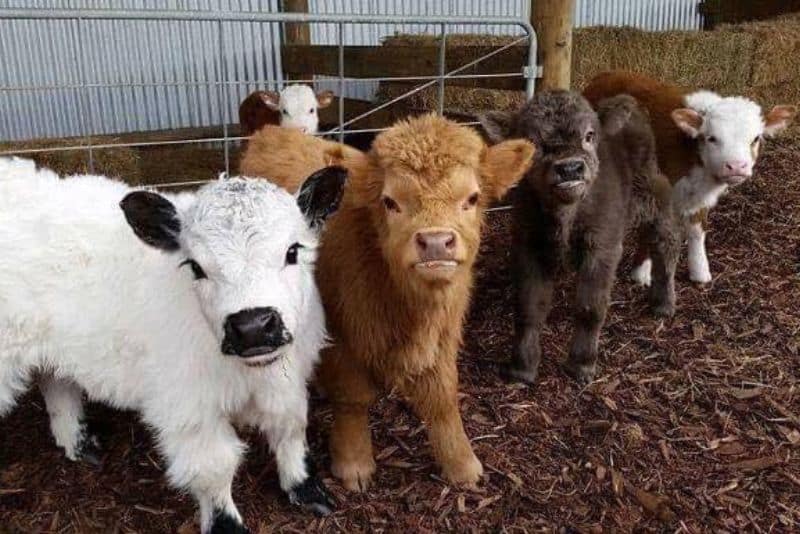
If someone refers to a “teacup” mini cow, it may be more of a marketing term rather than a specific breed or category. It’s crucial to be cautious about such terms and rely on established breed standards and reputable breeders when considering or discussing miniature cows.
Always ensure that any claims about the size or characteristics of a mini cow are based on accurate information and responsible breeding practices.
Physical Appearance, Personality, and Care of Mini Cows
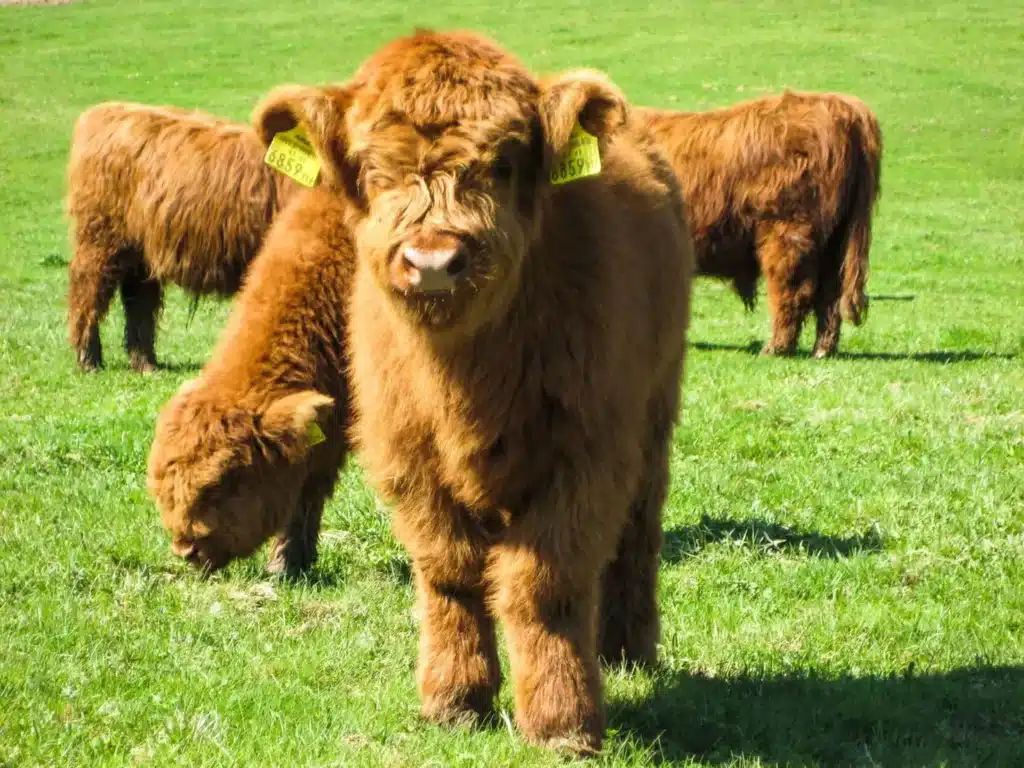
Physical Appearance
Miniature cows exhibit a charming and compact appearance, with a smaller frame compared to traditional cattle breeds. They typically stand between 36 and 48 inches at the shoulder, and their weight ranges from 500 to 1,000 pounds or even less, depending on the specific breed and individual genetics.
Despite their diminutive size, mini cows often retain the distinctive features of their larger counterparts, including various coat colours and patterns. Common miniature cow breeds include Miniature Hereford, Miniature Angus, and Miniature Jersey.
Personality
Mini cows are known for their gentle and docile nature, making them well-suited for various purposes, including as pets or companions. Many owners describe them as friendly and social animals that can form strong bonds with humans.
Their manageable size and calm demeanour make them easier to handle, even for individuals with limited experience in handling livestock. Additionally, mini cows are often intelligent and can be trained, adding to their appeal as pets.
Care
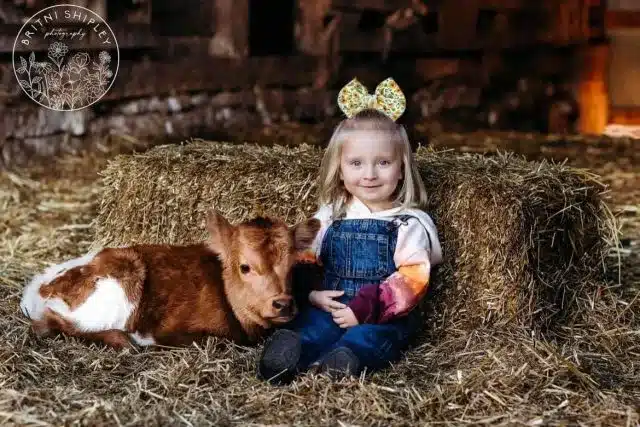
The care of mini cows is somewhat similar to that of their full-sized counterparts, with a few considerations due to their smaller size. Here are some key aspects of caring for mini cows:
- Feeding: Provide a balanced diet that meets their nutritional needs. Mini cows may require less feed than larger cattle, but the quality of the diet is crucial for their health.
- Shelter: Ensure they have access to adequate shelter to protect them from extreme weather conditions. A cosy barn or shed can offer protection from harsh weather.
- Space: While they require less space than larger cows, they still need enough room to move around comfortably. Adequate pasture or an appropriately sized enclosure is essential.
- Healthcare: Regular veterinary check-ups, vaccinations, and parasite control are vital for maintaining the health of mini cows.
- Socialization: Mini cows are social animals and often thrive in the company of other cattle. Providing them with companionship can contribute to their well-being.
- Training: Mini cows can be trained to lead, respond to commands, and interact with humans. Positive reinforcement methods are generally effective in training them.
It’s important to note that while mini cows can make delightful pets, they still require a commitment to their care and well-being. Prospective owners should thoroughly research the specific needs of the chosen breed and be prepared to meet those requirements for a happy and healthy mini cow.
Read Also: How Much Horsepower Does a Horse Have?
How Much is a Mini Cow?
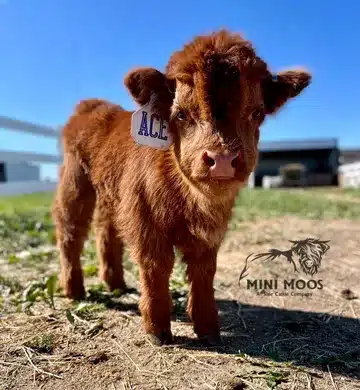
The cost of a mini cow varies based on factors such as breed, age, and quality. For instance, a miniature Hereford or Angus cow may typically be priced around $1,500, while a mini Highland cow could range upwards of $2,500, and a Mini HighPark might be valued at $7,000.
Prices can escalate to $10,000 or more, depending on the quality of the mini cattle. Recognizing that owning miniature cattle demands a significant commitment and responsibility is crucial. These animals necessitate daily care, including feeding and attention, and they have a lifespan of up to 20 years.
To adequately accommodate your new miniature cow, it’s advisable to have a minimum of 3 acres of space. Additionally, having a plan in place for spending time with your new mini calf or providing a companion animal is highly recommended.
Read Also: 10 Hand Reference Ideas: What Does it Mean?
How to Get a Mini Cow
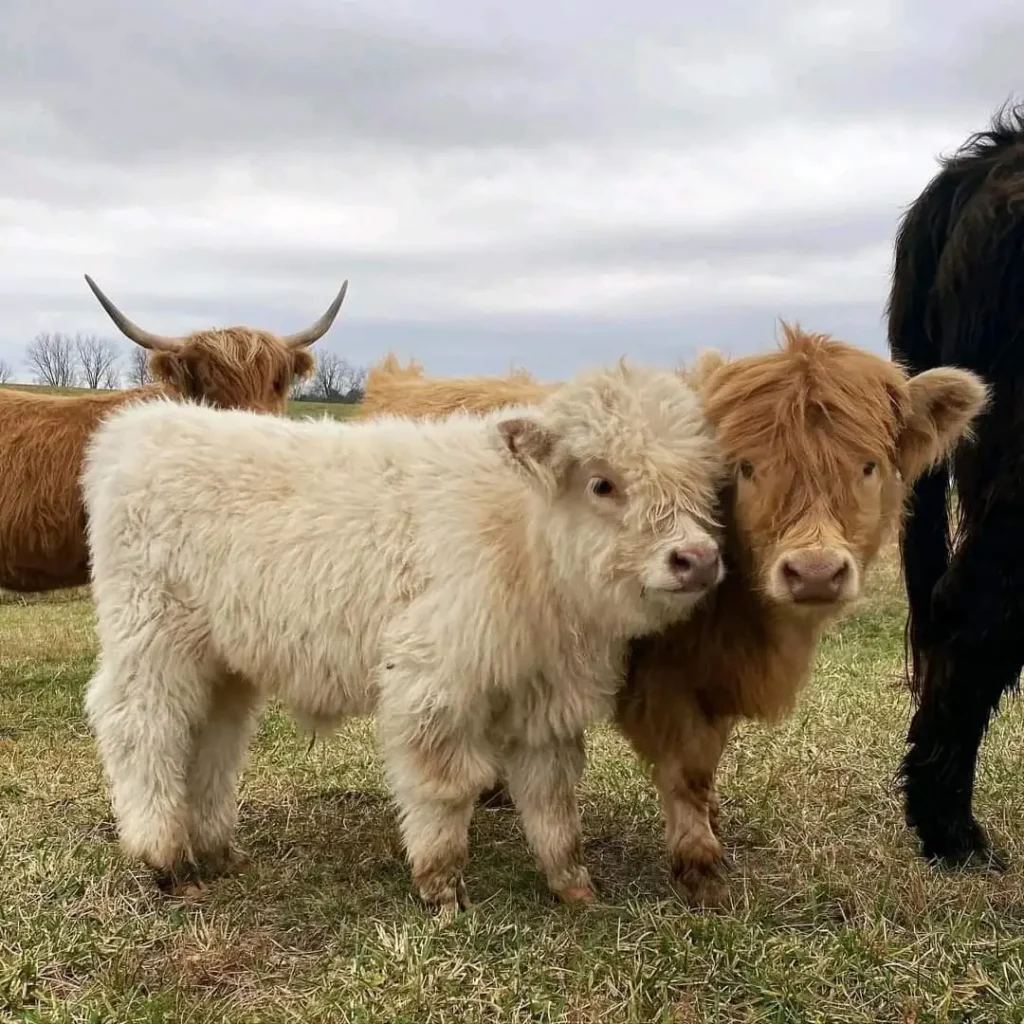
If the prospect of owning a miniature cow has captured your interest, there are various avenues through which you can acquire one. Here are several options to explore:
Breeders:
Consider purchasing a miniature cow from a reputable breeder. To ensure a positive experience, conduct thorough research to find a breeder with a commendable reputation and extensive experience in breeding miniature cattle. Both online platforms and local livestock associations can be valuable resources for locating reputable breeders.
Auctions:
Attend livestock auctions as an alternative means of acquiring a miniature cow. Keep in mind that auctions can be unpredictable, and there’s no guarantee of finding the specific breed or quality you’re seeking. However, it’s an option worth exploring for those open to the excitement and variability of auction settings.
Rescue Organizations:
Another noble option is adopting a miniature cow from a rescue organization. These entities specialize in rescuing and rehabilitating miniature cows that have been abandoned, neglected, or abused. You can discover such organizations both online and through local animal shelters.
Before committing to bringing a miniature cow into your life, it’s crucial to carefully weigh the responsibilities associated with ownership. These diminutive bovines necessitate daily feeding and attention, with a potential lifespan of up to 20 years.
Adequate accommodation is paramount, with a recommended minimum of 3 acres. Additionally, having a well-thought-out plan for spending time with your new mini calf or arranging for a companion animal is highly advisable.
See Also: Is the Zambian Meat Website Real? Find Out! | Cannibalism
Conclusion
The world of miniature cows offers a delightful blend of charm, practicality, and responsibility. Whether you choose to acquire a miniature cow from a reputable breeder, explore the unpredictable but exciting avenue of auctions, or opt for the compassionate route of adoption through rescue organizations.
As we’ve explored, these pint-sized bovines come with unique considerations. From their manageable size and friendly demeanour to their commitment to daily care and attention, owning a miniature cow is a rewarding yet substantial responsibility.
Whether you’re drawn to their practical applications in agriculture, their potential as endearing companions, or simply their undeniable cuteness, the miniature cow opens the door to a world of agricultural innovation and heartwarming connections.
